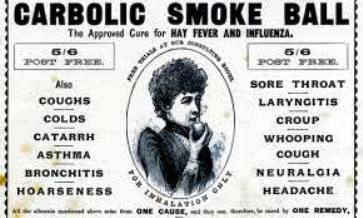Students for the All India Bar Examination (AIBE), Should Check important sections of the IPC, landmark cases, and multiple-choice questions (MCQs) for effective learning.
📖 Introduction to the Indian Penal Code (IPC)
The Indian Penal Code, 1860 (IPC) is the primary criminal law in India. It defines various offenses and prescribes punishments. It is divided into 23 chapters and 511 sections.
📌 Important Topics & Landmark Cases in IPC
1️⃣ General Principles of Criminal Law (Sections 1-52)
🔹 Case: R v. Prince (1875) – Mistake of Fact
📌 Facts: A man took a girl under 16, believing she was above 18.
⚖ Judgment: The court held that mistake of fact is not a defense in strict liability crimes.
✅ Conclusion: If an offense does not require mens rea (criminal intent), mistake of fact is not an excuse.
2️⃣ Actus Reus & Mens Rea (Guilty Act & Guilty Mind)
🔹 Case: Nathulal v. State of Madhya Pradesh (1965) – Mens Rea is Essential
📌 Facts: A businessman sold food grains without a license but was unaware of its expiration.
⚖ Judgment: The Supreme Court ruled mens rea is necessary for criminal liability.
✅ Conclusion: If there is no criminal intent, the accused cannot be punished.
3️⃣ Murder & Culpable Homicide (Sections 299-304 IPC)
🔹 Case: K.M. Nanavati v. State of Maharashtra (1962) – Difference Between Murder & Culpable Homicide
📌 Facts: A naval officer shot his wife’s lover in a fit of rage.
⚖ Judgment: The Supreme Court held that Nanavati acted intentionally and was guilty of murder under Section 302 IPC.
✅ Conclusion: The case clarified the difference between murder (intentional) and culpable homicide (unintentional killing).
4️⃣ Criminal Negligence (Section 304A IPC)
🔹 Case: Sushil Ansal v. State (2017) – Uphaar Cinema Tragedy
📌 Facts: A fire in Uphaar Cinema killed 59 people due to safety violations.
⚖ Judgment: The Supreme Court held the owners guilty under Section 304A (causing death by negligence).
✅ Conclusion: Criminal negligence can lead to imprisonment even if there is no intent to kill.
5️⃣ Theft, Robbery & Dacoity (Sections 378-395 IPC)
🔹 Case: Shyam Behari v. State of Uttar Pradesh (1957) – What is Dacoity?
📌 Facts: A gang of five or more people committed robbery.
⚖ Judgment: The Supreme Court held that if five or more people commit robbery, it becomes dacoity (Section 395 IPC).
✅ Conclusion: The number of offenders determines whether the offense is robbery or dacoity.
6️⃣ Rape & Sexual Offenses (Section 375-376 IPC)
🔹 Case: Tuka Ram v. State of Maharashtra (Mathura Rape Case, 1978)
📌 Facts: A minor girl was raped by police officers, but the court acquitted them.
⚖ Judgment: Public outrage led to legal reforms in rape laws, strengthening victim protection.
✅ Conclusion: The burden of proof in rape cases shifted to the accused under later amendments.
7️⃣ Defamation (Section 499-500 IPC)
🔹 Case: Subramanian Swamy v. Union of India (2016) – Constitutionality of Defamation Law
📌 Facts: Politician Subramanian Swamy challenged the criminal defamation law as unconstitutional.
⚖ Judgment: The Supreme Court upheld Sections 499-500 IPC, ruling that defamation is a reasonable restriction on free speech.
✅ Conclusion: Freedom of speech is not absolute and can be limited to protect reputations.
📝 MCQs for AIBE Preparation (IPC)
1️⃣ General Principles of Criminal Law
Q1. Which of the following is NOT an essential element of a crime?
A) Actus Reus
B) Mens Rea
C) Motive
D) Intention
✅ Answer: C) Motive
Q2. The principle of “Ignorance of law is no excuse” means:
A) A person cannot claim that they didn’t know the law
B) A person can avoid punishment if unaware of the law
C) Only lawyers should know the law
D) Laws do not apply to foreigners
✅ Answer: A) A person cannot claim that they didn’t know the law
2️⃣ Murder & Culpable Homicide
Q3. Under Section 299 IPC, which of the following is NOT an ingredient of culpable homicide?
A) Intention to cause death
B) Knowledge that the act is likely to cause death
C) Sudden provocation
D) Planning in advance
✅ Answer: D) Planning in advance
Q4. The main difference between murder (Section 302 IPC) and culpable homicide (Section 304 IPC) is:
A) Murder is committed by professionals
B) Murder requires intention, while culpable homicide may not
C) Culpable homicide is more severe than murder
D) None of the above
✅ Answer: B) Murder requires intention, while culpable homicide may not
3️⃣ Criminal Negligence
Q5. Section 304A IPC deals with:
A) Culpable homicide not amounting to murder
B) Death caused by negligence
C) Intentional killing
D) Rape
✅ Answer: B) Death caused by negligence
4️⃣ Theft, Robbery & Dacoity
Q6. For an act to be considered dacoity under Section 395 IPC, how many people must be involved?
A) At least 2
B) At least 3
C) At least 5
D) More than 10
✅ Answer: C) At least 5
5️⃣ Rape & Sexual Offenses
Q7. Which landmark case led to significant reforms in Indian rape laws?
A) Maneka Gandhi v. Union of India
B) Vishaka v. State of Rajasthan
C) Tuka Ram v. State of Maharashtra
D) Aruna Shanbaug v. Union of India
✅ Answer: C) Tuka Ram v. State of Maharashtra



